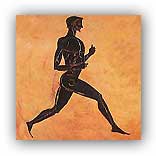|
Physical activity among children and teens is lower
than previously thought and young adults after the
age of 20 show the only increases in activity over
the lifespan, suggests a study conducted by
researchers from the Johns Hopkins Bloomberg School
of Public Health.

Starting at age 35, activity levels declined through
midlife and older adulthood.
The study also identified different times throughout
the day when activity was highest and lowest, across
age groups and between males and females.
“Activity levels at the end of adolescence were
alarmingly low, and by age 19, they were comparable
to 60-year-olds,” says the study’s senior author,
Vadim Zipunnikov, assistant professor in the
Bloomberg School’s Department of Biostatistics.
For their study, the researchers used data from the
National Health and Nutrition Examination Survey
from the 2003-2004 and 2005-2006 survey cycles.
The 12,529 participants wore tracking devices for
seven straight days, removing them for only bathing
and at bedtime.
The devices measured how much time participants were
sedentary or engaged in light or
moderate-to-vigorous physical activity.
The researchers broke down findings into five age
groups:
children (ages six to 11);
adolescents (ages 12 to 19);
young adults (ages 20 to 29);
adults at midlife (ages 31 to 59);
and older adults (age 60 through age 84).
Forty-nine percent were male, the rest female.
For school-age children, the primary window for
activity was the afternoon between two and six P.M..
Activity among 20-somethings, the only age group
that saw an increase in activity levels, was spread
out throughout the day, with an increase in physical
activity in the early morning, compared to younger
adolescents.
The increase may be related to starting full-time
work and other life transitions.
For all age groups, males generally had higher
activity levels than females, particularly
high-intensity activity, but after midlife, these
levels dropped off sharply compared to females.
Starting at age 35, activity levels declined through
midlife and older adulthood.
Among adults 60 years and older, males were more
sedentary and had lower light-intensity activity
levels than females.
The study confirmed that recommended guidelines were
not being met.
For instance, the World Health Organization (WHO)
recommends at least 60 minutes of
moderate-to-vigorous physical activity a day for
children ages five to 17 years.
The study found that more than 25 percent of boys
and 50 percent of girls ages six to 11 and more than
50 percent of male and 75 percent of female
adolescents ages 12 to 19 had not met the WHO
recommendation.
“The goal of campaigns aimed at increasing physical
activity has focused on increasing higher-intensity
exercise,” says Zipunnikov.
“Our study suggests that these efforts should
consider time of day and also focus on increasing
lower-intensity physical activity and reducing
inactivity.”
For more information
Re-evaluating the effect of age on physical activity
over the lifespan
Preventive Medicine
Link...
Johns Hopkins Bloomberg School of Public Health
Link...
MDN |